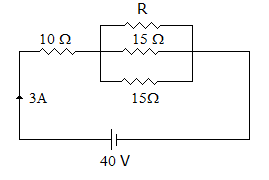Electronics and Communication Engineering - Electronic Devices and Circuits
Exercise : Electronic Devices and Circuits - Section 3
- Electronic Devices and Circuits - Section 14
- Electronic Devices and Circuits - Section 27
- Electronic Devices and Circuits - Section 26
- Electronic Devices and Circuits - Section 25
- Electronic Devices and Circuits - Section 24
- Electronic Devices and Circuits - Section 23
- Electronic Devices and Circuits - Section 22
- Electronic Devices and Circuits - Section 21
- Electronic Devices and Circuits - Section 20
- Electronic Devices and Circuits - Section 19
- Electronic Devices and Circuits - Section 18
- Electronic Devices and Circuits - Section 17
- Electronic Devices and Circuits - Section 16
- Electronic Devices and Circuits - Section 15
- Electronic Devices and Circuits - Section 1
- Electronic Devices and Circuits - Section 13
- Electronic Devices and Circuits - Section 12
- Electronic Devices and Circuits - Section 11
- Electronic Devices and Circuits - Section 10
- Electronic Devices and Circuits - Section 9
- Electronic Devices and Circuits - Section 8
- Electronic Devices and Circuits - Section 7
- Electronic Devices and Circuits - Section 6
- Electronic Devices and Circuits - Section 5
- Electronic Devices and Circuits - Section 4
- Electronic Devices and Circuits - Section 3
- Electronic Devices and Circuits - Section 2
1.
In figure, the value of R should be


Answer: Option
Explanation:
The resistance of parallel combination = 
2.
An RLC series circuit has R = 7.07 Ω, L = .707 H and C = 7.07 μF. At Half power frequencies the circuit impedance is likely to be
Answer: Option
Explanation:
At half power frequency the circuit impedance is 2 times resistance.
3.
In a series R, L, C circuit the impedance triangle is the same when XL < XC and XL > XC .
Answer: Option
Explanation:
The quadrants are different.
4.
The zinc can of a dry cell serves as positive terminal.
Answer: Option
Explanation:
Zinc can serves as negative terminal.
5.
Two similar coils have self inductance of 1 mH each. Coefficient of coupling is 0.5. The mutual inductance M is
Answer: Option
Explanation:
M = kL1L2
Quick links
Quantitative Aptitude
Verbal (English)
Reasoning
Programming
Interview
Placement Papers